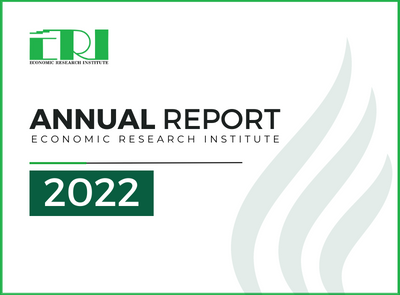The study aims to examine determinants of internal migration of population in Mongolia. We made an attempt to analyze factors affecting internal migration of population on the basis of the database of the NSO Labor Force Surveys 2008-2009, 2011, and 2013 were conducted at national level in 4 regions (Central, Western, East, and Khangai). Location, age, sex, education, employment status, marital status, reasons for migration of respondents, who participated in migration, was clarified and analysis of factors leading to migration was made. The logit model was used to compute influence of factors affecting participation of population in internal migration. From the study findings, we can conclude that migrants mainly participated in urban-urban and rural-urban migration. Migrants were mainly economic migrants, who moved to seek jobs, improve their living conditions, or whose workplaces moved/were transferred. Disparities in population, social and economic characteristics affected rural-urban migration of population. Internal migration is a selective process based on demographic and socio-economic characteristics of migrants in Mongolia. But in the future, more characteristics of individuals or households such as: community characteristics, household income, living conditions, returns to migration and social network could be captured by LFS.
 mn
mn en
en- Нүүр хуудас
- Бидний тухай
ERI нь чанарын өндөр түвшний, мэргэжлийн хөндлөнгийн хяналтаар шүүгдсэн, хараат бус байдлаа хадгалж чадсан, оновчтой асуудал дэвшүүлсэн бодлогын шинжилгээ, судалгааны ажлыг хийх, санхүүжүүлэх, эдгээр судалгаануудын гол үр дүнг нийтэд ойлгомжтой байдлаар интернэтээр болоод бусад мэдээллийн арга хэрэгслээр сурталчлах, бодлогын судалгаа хийх хэрэгцээг тодорхойлж төрийн болоод бусад байгууллагуудад танилцуулахад гол үйл ажиллагаагаа чиглүүлэх юм.
- Мэдээ, мэдээлэл
Манай хүрээлэнгээс зохион байгуулж буй хурал болон судалгаа, шинжилгээний ажлуудтай холбоотой мэдээллүүд.
- Манай Судалгаа
Манай хүрээлэнгийн хийгдэж байгаа судалгаа, хийгдсэн судалгаанууд мөн ERI сэтгүүлд хэвлэгдсэн судалгааны ажлуудыг энэхүү цэсээс авах боломжтой.
- Судалгааны сан
Олон улсын байгууллага болон Монгол улсын судалгаа, шинжилгээний газруудын эдийн засгийн чиглэлээр хийгдэж байгаа болон хийгдсэн судалгааны ажлуудын санг бид энэхүү сандаа бүрдүүлж байна.
- Холбоо барих
